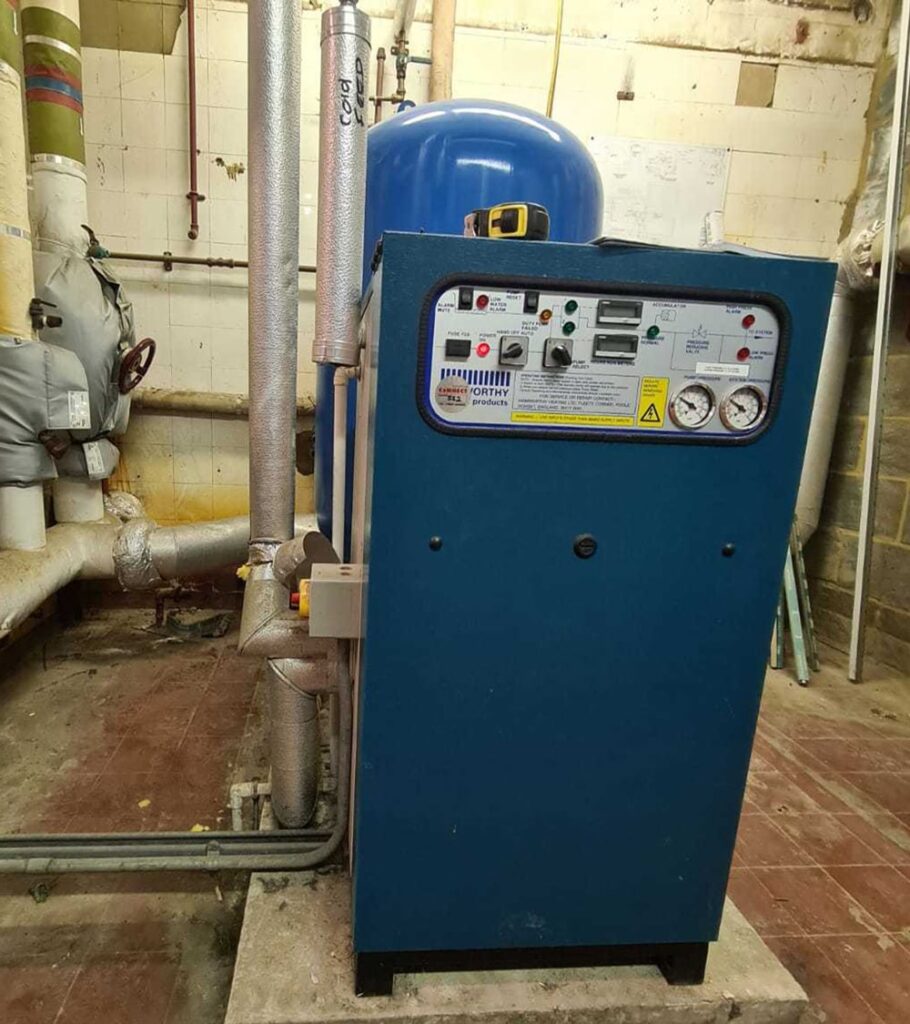
The Challenge
Like many of our clients, the increasing age of equipment poses a significant challenge as essential parts become unavailable. This situation has led to potential facility failures due to the inability to repair old equipment. During a routine maintenance service at an NHS site, we encountered a problem with the pressurisation set in their heating system. Unfortunately, the necessary parts to fix the issue had been discontinued by the manufacturer, leaving us unable to carry out the required repairs. It is crucial to maintain the pressurisation sets in optimal condition as they play a vital role in regulating pressure within the heating system and safeguarding the boilers.
Our Solution
After a thorough analysis, our team identified that the obsolete parts were the main obstacle to repairing the pressurisation set. We considered two possible solutions: sourcing alternative parts or replacing the entire unit with a current model. Although repairing the old unit seemed more cost-effective initially, we realized that the benefits and long-term advantages of a new unit outweighed the repair. Attempting to fix the outdated pressurisation set would have been akin to applying a temporary solution.
We decided to specify, supply, and install a modern Flamco twin digital pressurisation set as a replacement for the old unit. This comprehensive approach included making all necessary electrical and mechanical connections, ensuring proper pipework and safety boiler interlocks, and setting the parameters appropriately.
The Result
By implementing our chosen solution, we successfully resolved the issue at hand while simultaneously modernizing the entire heating system. This proactive approach prevented any major incidents from occurring in the future. The new Flamco twin digital pressurisation set ensures that the facility is equipped with the latest technology, and its availability of parts guarantees its smooth operation for years to come. Our client can now rest assured that their facility is safeguarded and will continue to operate efficiently without the risk of future obsolescence.
Case Studies









